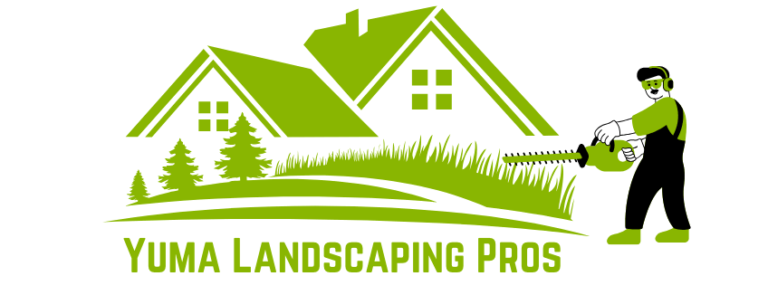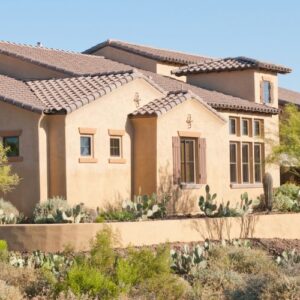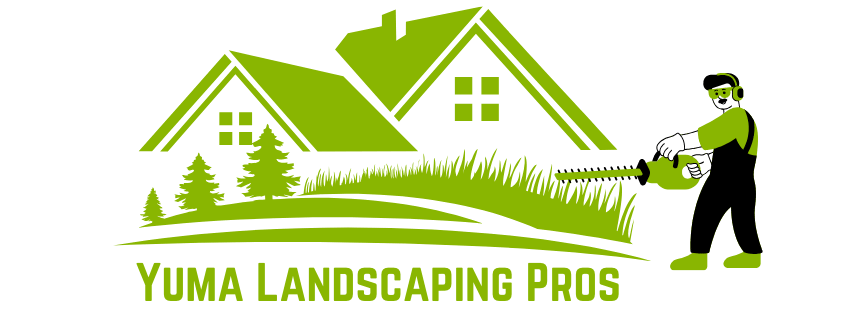Yuma’s arid landscape presents challenges that can trip up even seasoned gardeners. Many people make common mistakes that hinder their yard’s beauty and health. From choosing the wrong plants to improper watering techniques, these errors can be costly. Understanding these pitfalls is crucial for creating a thriving garden in the desert.
This blog post will highlight five common landscaping mistakes to avoid in Yuma’s desert climate. By learning from these errors, you can ensure your garden flourishes despite the harsh conditions. Ready to transform your yard into a desert oasis? Let’s dive in and discover what to avoid.
Poor Plant Selection
Choosing the wrong plants can lead to big problems in Yuma’s desert climate. Many people make the mistake of picking plants that look pretty but can’t survive the harsh conditions. It’s important to select the right plants for your landscape. This can save you time, money, and effort in the long run. Let’s explore some common mistakes and how to avoid them.
Things To Consider For New Construction Landscaping
Native Plants Vs. Exotic Species
Using native plants in your garden is always a smart choice. These plants are adapted to the local climate and soil. They need less water and care compared to exotic species. Native plants also support local wildlife. Birds, insects, and other animals depend on them for food and shelter.
Exotic species may look attractive but come with challenges. They often require more water and may not withstand Yuma’s extreme temperatures. They can also disrupt the local ecosystem. Exotic plants may become invasive, outcompeting native species and altering the natural balance.
| Native Plants | Exotic Species |
|---|---|
| Adapted to local climate | Not always climate-friendly |
| Require less water | Often need more water |
| Support local wildlife | Can disrupt ecosystems |
Drought-tolerant Choices
In Yuma’s desert climate, selecting drought-tolerant plants is crucial. These plants can survive with minimal water. They have adapted to thrive in hot and dry conditions. Some excellent choices for Yuma include:
- Agave
- Ocotillo
- Desert Marigold
- Red Yucca
These plants not only conserve water but also add beauty to your landscape. They come in various shapes, sizes, and colors. You can create a stunning garden that requires little maintenance.
By choosing drought-tolerant plants, you reduce water usage and help the environment. You also save on water bills and reduce the time spent on gardening. It’s a win-win situation for both you and the planet.
Overwatering Issues
In Yuma’s desert climate, overwatering can be a significant issue. Many homeowners think more water means healthier plants. But, in reality, this can lead to various problems. Let’s dive into the details of overwatering and how to avoid it.
Impact On Plant Health
Overwatering can severely affect plant health. It can cause root rot, which makes plants weak and susceptible to diseases. Plants need oxygen for their roots. Too much water fills the air pockets in the soil, leading to oxygen deficiency. This can stunt growth and, in extreme cases, kill the plant.
Efficient Irrigation Techniques
To avoid overwatering, use efficient irrigation techniques. These methods ensure plants get enough water without drowning them. Here are some tips:
- Use drip irrigation systems. They deliver water directly to the plant roots.
- Water plants early in the morning. This reduces evaporation and ensures water reaches the roots.
- Install a soil moisture sensor. It helps monitor soil moisture levels and prevents overwatering.
- Group plants with similar water needs together. This ensures each plant gets the right amount of water.
By following these techniques, you can maintain a healthy landscape in Yuma’s desert climate.
Improper Soil Preparation
Landscape Yuma’s desert climate can be challenging. One common mistake is improper soil preparation. The desert soil requires special care to support healthy plants. This section will guide you through the essentials of soil preparation.
Soil Testing And Amendments
Before planting, test your soil. Soil testing helps identify nutrient deficiencies and pH levels. You can use a DIY kit or send samples to a lab. Knowing your soil’s condition allows you to make necessary adjustments.
Consider these common amendments for Yuma’s soil:
- Organic Matter: Improves soil structure and fertility.
- Compost: Adds nutrients and improves water retention.
- Gypsum: Helps break up clay soils.
- Sulfur: Lowers soil pH if it is too alkaline.
Regularly incorporating these amendments prepares the soil for optimal plant growth.
Best Soil Types For Yuma
The desert climate of Yuma requires specific soil types. The best soils for this region are:
| Soil Type | Benefits |
|---|---|
| Sandy Loam | Good drainage, suitable for various plants. |
| Clay Loam | Retains moisture, good for water conservation. |
Combining these soil types with proper amendments results in a fertile ground. This supports your desert landscape.
Ignoring Mulching Benefits
Ignoring mulching benefits can be one of the biggest mistakes in Yuma’s desert climate. Mulching isn’t just for looks; it provides essential benefits that can make or break your landscaping efforts. Understanding these benefits can save you time, money, and effort. Below, we explore two key aspects of mulching: moisture retention and weed control.
Moisture Retention
In Yuma’s desert climate, water is a precious resource. Mulch helps retain moisture in the soil by reducing evaporation. This ensures your plants get the water they need, even during hot, dry days. Mulch acts as a barrier, keeping the soil cooler and reducing the need for frequent watering.
Different types of mulch can offer varied benefits. Organic mulches like bark chips and straw decompose over time, adding nutrients to the soil. Inorganic mulches like gravel and stones do not decompose but can still help with moisture retention.
Weed Control
Weeds compete with your plants for water and nutrients. Mulch acts as a physical barrier, preventing weed seeds from getting the sunlight they need to germinate. This reduces the number of weeds in your garden and helps your plants thrive.
Mulching can be especially effective when combined with other weed control methods. For example, using landscape fabric under the mulch can provide an extra layer of protection against weeds.
Neglecting Sun Exposure
In Yuma’s desert climate, understanding and managing sun exposure is crucial for a thriving landscape. Many homeowners overlook the importance of sunlight, leading to unhealthy plants. Ignoring this vital aspect can result in a garden that struggles to survive the harsh desert conditions. Let’s explore how to properly account for sun exposure to ensure your landscape flourishes.
Sunlight Requirements
Different plants have varying sunlight needs. Some plants require full sun to thrive, while others need partial shade. Understanding these requirements is key to successful landscaping. Here is a simple table to guide you:
| Plant Type | Sunlight Requirement |
|---|---|
| Succulents | Full Sun |
| Desert Flowers | Partial Shade |
| Herbs | Full Sun to Partial Shade |
Ignoring these sunlight requirements can lead to poor growth and even plant death. Always check the specific needs of each plant before placing them in your garden.
Shade Solutions
In Yuma, providing shade can be as important as providing sun. Implementing shade solutions can help protect plants from extreme heat. Here are some effective methods:
- Shade Cloth: Use shade cloth to cover sensitive plants. This reduces direct sunlight while allowing air circulation.
- Strategic Planting: Plant taller plants or trees to naturally shade smaller, sun-sensitive plants.
- Structures: Build pergolas or arbors to create shaded areas in your garden.
These solutions can help maintain an optimal balance of sun and shade, ensuring your landscape remains vibrant and healthy.
Our Article About : Top 10 Residential Landscaping Ideas for Arizona Homes
Incorrect Pruning Methods
One of the most common landscaping mistakes in Yuma’s desert climate is incorrect pruning methods. Pruning is crucial for the health and aesthetics of your plants. Incorrect techniques can lead to damage, disease, and poor growth. To help you avoid these pitfalls, we will explore the importance of proper timing and techniques, as well as the right tools and equipment.
Timing And Techniques
Pruning at the wrong time can harm your plants. In Yuma’s desert climate, it’s essential to prune during the cooler months. Prune in late fall or early spring to avoid heat stress on plants.
The right technique matters too. Always make clean cuts at a 45-degree angle. Remove dead or diseased branches first. Then, thin out crowded areas to allow air and light to penetrate.
- Prune during cooler months
- Make clean cuts at a 45-degree angle
- Remove dead or diseased branches
- Thin out crowded areas
Tools And Equipment
The right tools make a significant difference. Use sharp, clean tools to avoid tearing branches. Dull tools can cause ragged cuts, leading to disease and insect problems.
For small branches, use hand pruners. For larger branches, use loppers or a pruning saw. Always disinfect your tools before and after use to prevent spreading disease.
| Tool | Use |
|---|---|
| Hand Pruners | Small branches |
| Loppers | Medium branches |
| Pruning Saw | Large branches |
By using the correct pruning methods, you can ensure your plants remain healthy and vibrant in Yuma’s desert climate. Proper timing, techniques, and tools are key to avoiding common landscaping mistakes.
Read More Article: How Much Does Landscaping Cost for a Small Yard
Skipping Seasonal Maintenance
Skipping Seasonal Maintenance can lead to several issues in Yuma’s desert climate. Regular maintenance is essential to keep your landscape healthy and vibrant. By neglecting seasonal tasks, you risk damaging your plants, wasting water, and diminishing the beauty of your outdoor space.
Routine Inspections
Performing routine inspections is crucial in maintaining your landscape. Check for signs of plant stress, such as wilting or discoloration. Inspect irrigation systems to ensure they are functioning properly. Look for any pests or diseases that could harm your plants. Routine checks help you catch problems early before they escalate.
Adjusting Care For Seasons
Adjusting care for the different seasons is vital in a desert climate. Water needs vary throughout the year. In winter, reduce watering to prevent root rot. During the hot summer months, increase watering to keep plants hydrated.
Pruning is another important task. Prune dead or damaged branches in the fall. This prepares your plants for new growth in the spring. Use mulch to protect roots from temperature extremes. Mulch also helps retain soil moisture.
| Season | Care Tips |
|---|---|
| Spring | Increase watering, fertilize plants, start pruning. |
| Summer | Water deeply, apply mulch, watch for pests. |
| Fall | Reduce watering, prune, protect from frost. |
| Winter | Water sparingly, cover sensitive plants, maintain equipment. |
By following these seasonal maintenance tips, you can ensure your landscape thrives year-round.
Lack Of Planning
In Yuma’s desert climate, lack of planning is a common mistake in landscaping. Good landscaping requires careful planning. Without it, you may face serious problems. These problems can be costly and hard to fix.
Designing With Climate In Mind
Yuma has a hot and dry climate. Designing without considering this can lead to failure. Choose plants that can survive in desert conditions. Use drought-resistant plants and native species. These plants need less water and care.
Avoid using plants that require a lot of water. They will struggle in Yuma’s heat. Plan your garden layout to provide shade. This helps protect your plants from the sun. Consider the direction of the sun and wind when designing.
Long-term Sustainability
Think about the long-term sustainability of your landscape. Using too much water is not sustainable. It can lead to higher water bills and environmental issues. Use efficient irrigation systems like drip irrigation. This reduces water waste.
Plan for the future growth of your plants. Overcrowding can harm your plants and make your garden look messy. Allow enough space for each plant to grow. Use mulch to retain moisture and reduce water evaporation.
Incorporate hardscaping elements like rocks and gravel. These materials require no water and can reduce soil erosion. Create a balance between plants and hardscaping for a sustainable landscape.
See Another Article : How to Stop Weeds from Growing Through Landscape Fabric
Frequently Asked Questions
What Are Common Landscaping Mistakes In Yuma’s Desert Climate?
Common mistakes include overwatering, planting non-native species, improper soil preparation, neglecting mulch, and inadequate shading. These errors can lead to plant stress and increased water use.
How Often Should You Water Desert Plants?
Water desert plants deeply but infrequently. Typically, once a week is sufficient. This encourages deep root growth and drought tolerance.
Why Is Mulch Important In Desert Landscaping?
Mulch helps retain soil moisture, reduce evaporation, and control weeds. It also insulates plant roots from extreme temperatures, promoting healthier growth.
What Plants Are Best For Yuma’s Desert Climate?
Choose drought-tolerant, native plants like agave, cacti, and desert marigold. These plants thrive in Yuma’s arid conditions with minimal water.
Conclusion
Avoiding common landscaping mistakes can greatly enhance your Yuma desert garden. Proper planning and plant selection are crucial. Choose Yuma Landscaping Pros to save water. Mulching helps retain moisture. Overwatering can harm your plants, so water wisely. Consistent maintenance keeps your landscape healthy and beautiful.
By following these tips, you can create a thriving, low-maintenance garden. Enjoy a beautiful, sustainable outdoor space in Yuma’s unique climate. Happy landscaping!
Keep reading to find out more, including:



